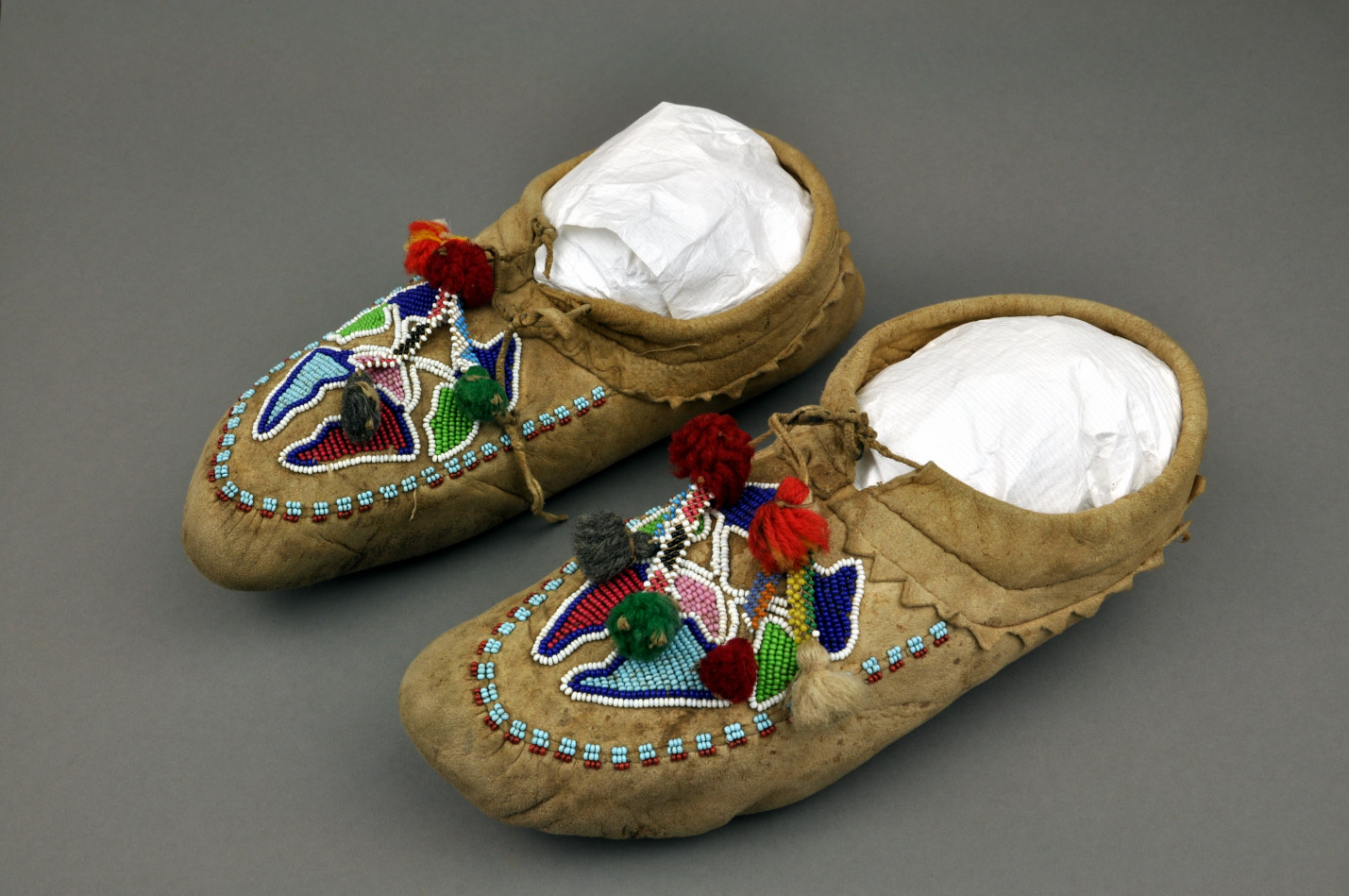Posted January 18, 2012 by DHSdigital
While the DHS artifact collection is primarily centered around metro Detroit objects, there is a significant collection of Native American material from throughout the Great Lakes region. As the ancestral home to more than a dozen different tribes, the Great Lakes were a source of food, transportation, clothing, shelter, and trade for thousands of years. With the establishment of Detroit came manufactured trade goods. One of the more common trade items among American Indians were glass beads. These beads were used in a variety of ways to adorn every day objects such as containers, tools, and clothing. The one article of clothing that is most unique among American Indians is footwear—commonly known as moccasins. Each tribe had very distinct ways of constructing and decorating their moccasins to identify who they were. While the collection contains several pairs of moccasins, we have picked these three distinctive pairs from different tribes to share. 
Anishinabe moccasins

Potawatomie moccasins

Ho-Chunk moccasins




